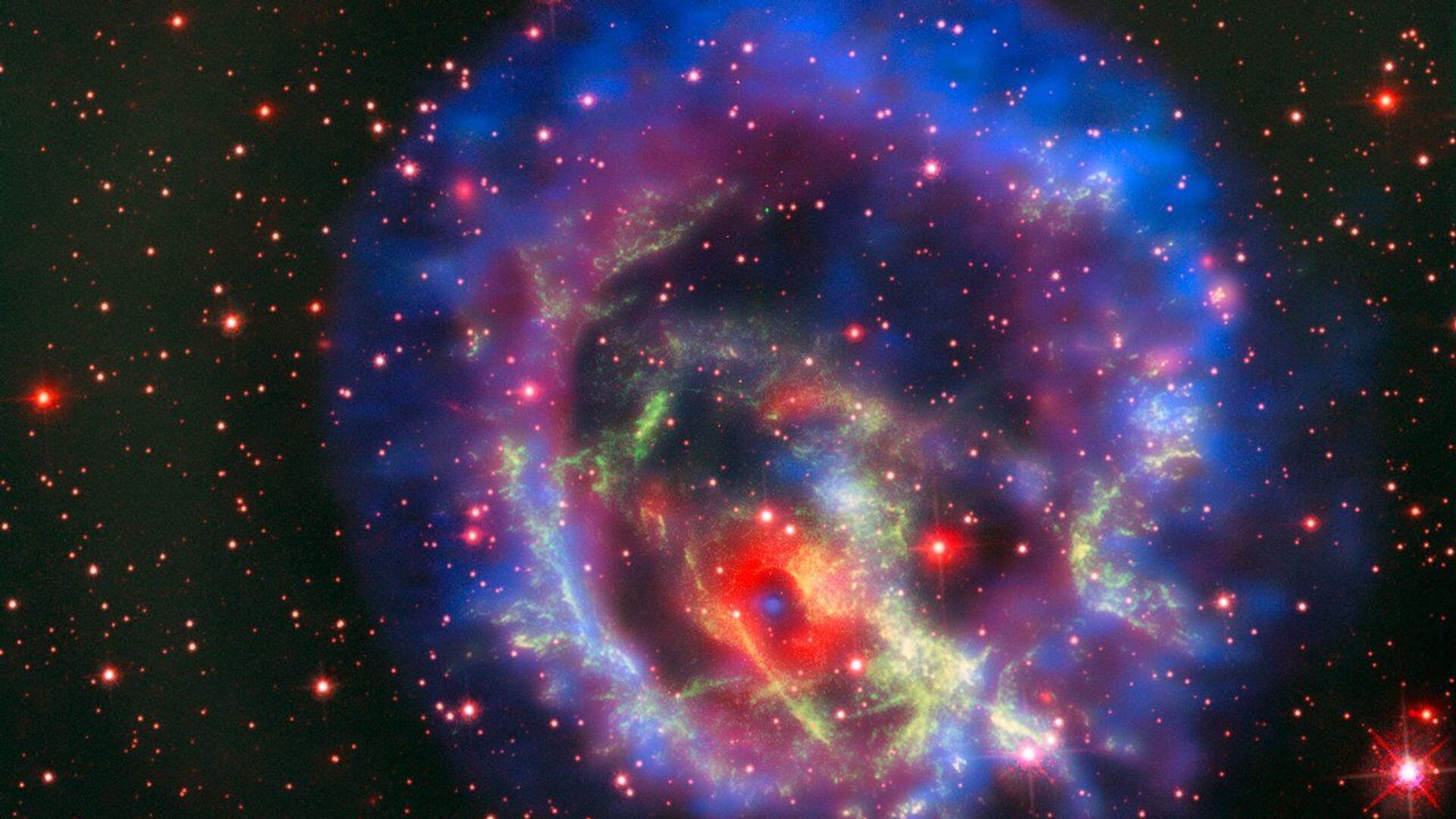https://sputnikglobe.com/20210907/scientists-may-have-located-never-before-seen-type-of-supernova-1088860319.html
Scientists May Have Located Never-Before-Seen Type of Supernova
Scientists May Have Located Never-Before-Seen Type of Supernova
Sputnik International
A massive and luminous explosion of a star is known as supernova, and it typically occurs at the star's last evolutionary step, or when a white dwarf is... 07.09.2021, Sputnik International
2021-09-07T19:50+0000
2021-09-07T19:50+0000
2023-04-12T16:59+0000
supernova
star
science & tech
space
https://cdn1.img.sputnikglobe.com/img/106399/65/1063996587_0:280:1280:1000_1920x0_80_0_0_3d6a91433dcbcd56677956377e0f40ad.jpg
A never-before-seen type of supernova may have been registered by astronomers, according to a California Institute of Technology study based on the Very Large Array Sky Survey published in Science on Friday.Scientists located a radio source that was not present in earlier radio surveys, suggesting that the only possible reason for it could have been a merger-triggered supernova that occurred after an explosion of a massive star, an event possibly caused by a black hole or neutron star companion colliding with it.After the star exploded in a supernova, VT 1210+4956, the radio transient, occurred, prompting astronomers to compare it with a different catalog of brief bright events in the X-ray spectrum. It was discovered that there was a source of X-rays that originated from the same spot in the sky as VT 1210+4956.This is the first time such type of supernova to be spotted, with the scientific team naming the discovery "serendipitous". Dong compared the findings to spotting the proverbial needle in a haystack.
Sputnik International
feedback@sputniknews.com
+74956456601
MIA „Rossiya Segodnya“
2021
News
en_EN
Sputnik International
feedback@sputniknews.com
+74956456601
MIA „Rossiya Segodnya“
Sputnik International
feedback@sputniknews.com
+74956456601
MIA „Rossiya Segodnya“
supernova, star, science & tech, space
supernova, star, science & tech, space
Scientists May Have Located Never-Before-Seen Type of Supernova
19:50 GMT 07.09.2021 (Updated: 16:59 GMT 12.04.2023) A massive and luminous explosion of a star is known as supernova, and it typically occurs at the star's last evolutionary step, or when a white dwarf is triggered into runaway nuclear fusion. The phenomenon of supernovae is still largely unknown and is continually being examined by the scientific community.
A
never-before-seen type of supernova may have been registered by astronomers, according to a California Institute of Technology study based on the Very Large Array Sky Survey
published in Science on Friday.
Scientists located a radio source that was not present in earlier radio surveys, suggesting that the only possible reason for it could have been a merger-triggered supernova that occurred after an explosion of a massive star, an event possibly caused by a black hole or neutron star companion colliding with it.
"Follow-up radio and optical spectroscopy show that it is an expanding supernova remnant slamming into surrounding material, probably ejected from the star centuries before it exploded", an excerpt from the research said. "An unidentified x-ray transient occurred at a consistent location in 2014, suggesting an explosion at that time that produced a jet. The authors suggest that the most likely explanation is a merger-triggered supernova."
After the star
exploded in a supernova, VT 1210+4956, the radio transient, occurred, prompting astronomers to compare it with a different catalog of brief bright events in the X-ray spectrum. It was discovered that there was a source of X-rays that originated from the same spot in the sky as VT 1210+4956.
"The X-ray transient was an unusual event—it signaled that a relativistic jet was launched at the time of the explosion," said Dillon Dong, one of the study's co-authors. "And the luminous radio glow indicated that the material from that explosion later crashed into a massive torus of dense gas that had been ejected from the star centuries earlier. These two events have never been associated with each other, and on their own they're very rare."
This is the first time such type of supernova to be spotted, with the scientific team naming the discovery "serendipitous". Dong compared the findings to spotting the proverbial needle in a haystack.

